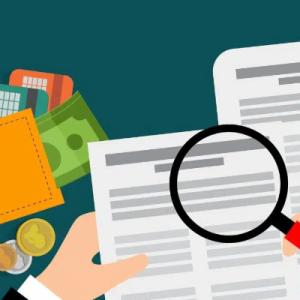Corporate Insurance: The Difference Between Bankruptcy, Survival?

STORY INLINE POST
Picture the following scenario: A small business in Mexico, let’s call it One Company Corporation, finds itself in a strong growth trajectory that has enabled the acquisition of new, top-of-the-line machinery along with a complete renovation of its facilities. This investment represents a big financial commitment but considering how well things are going, this expense should sit comfortably within the P&L forecast for the upcoming months.
Then, the unthinkable happens. A nearby river is flooded after days of intense rain. This unprecedented event causes severe damage to One Company’s premises and inventory, leaving the new equipment unusable. Since flooding in the region is not that common, the owner did not think insurance was necessary. Today, One Company had to absorb the losses, placing the company in a very risky situation, with its long-term viability at risk, including closing its doors permanently.
This scenario, as drastic as it seems, is more common than you might think. Small and medium businesses (SMBs) are in a peculiar position when it comes to insurance. Small companies tend to operate on a tight budget and low cash flow; therefore, considering the acquisition of insurance policies is an unnecessary luxury. At the same time, their size and liquidity make them vulnerable to volatile and unpredictable scenarios, and in many cases, they do not have the working capital needed to weather eventualities. SMBs tend to not have insurance even though they are likely to be disproportionately affected by their environment.
The reality is that all companies, both big and small, need some type of insurance coverage. According to the Mexican Association of Insurance Institutions, less than 20 percent of Mexican companies have some type of insurance. Disseminating more factual information on the matter to SMBs, particularly when it comes to entrepreneurial activity, is crucial for the country to build resilient, self-sustainable and long-standing industries.
But the question of insurance is not a simple one. Each business must understand its specific insurance needs based on a risk analysis that considers industry, type of operation, assets owned and even political and geographic environment. Insurance is very different for a manufacturer in a cold part of the country than for a digital native business carried out at an urban home. Yet, they are both liable for losses.
What Insurance Does a Company Need?
While insurance is a must, it should always be acquired after a deep analysis and in an informed manner. The initial cost of insuring a company is not negligible, and so, particularly for a small business, decision-makers should be aware of their risks when considering which type of insurance their operation requires. Cash flow generation and requirements to get insurance are crucial to the decisioning process.
Commercial property insurance: A wide concept and perhaps the first thing most of us think when it comes to insurance. This type of coverage is focused on any possible damage a commercial property could suffer, including fires, natural disasters and even civil disobedience or vandalism. While this type of insurance is fundamental, with companies in many cases required by law to have some sort of related coverage, it’s also important to consider how recent remote workplace scenarios might be changing the very notion of commercial property.
Employee health insurance: Companies are made up of people and there are always specific risks our workforce incurs, depending on the characteristics of our activities. A manufacturer, for instance, will work to reduce the possibility of assembly line accidents but these should be considered nonetheless, while a courier service needs to evaluate how personnel should be covered when out on delivery.
Trade credit insurance: This type of insurance protects companies whenever a customer is unable to pay due to bankruptcy, political risks or other reasons specified in the coverage. It can be very useful to guarantee cash flow, thus allowing a company to continue operating without depending on the liquidity of others within their ecosystem.
These are just three types of insurance, but there are many others. Each has different characteristics and often, the insurance is adjusted to the needs of the business. As mentioned, to get the right coverage, the most important action before getting insurance is to start with a robust risk analysis.
Cyberattacks a Growing Risk for SMBs
Recent months have seen a considerable increase in cyberattacks. According to information from KPMG, 79 percent of organizations in Mexico have faced an increased number of cyberattacks since the pandemic began. When combined with hybrid work models, cybersecurity has become paramount for the integrity of every business during this period. Small companies are particularly vulnerable to such attacks given they tend to spend much less on this front when compared to bigger organizations.
While the first step is to invest in technological tools that help reduce the risk of a cyberattack, an insurance policy that considers such scenarios can be extremely helpful. Digital crime is a complex phenomenon. It can compromise customer privacy if personal information is leaked, bring operations to a halt if dedicated software is affected or even cause damage to valuable machinery through malfunction.
Insurance policies, from civil liability to commercial property coverage, are now considering this type of risk. Given the increasingly digital nature of our activities, cyberattacks are becoming more pervasive and can have broader implications for a company, particularly small ones that are sometimes dependent on a single system that could be vulnerable.
Business owners need to realize that insurance is not exclusive to big companies, and that, in fact, a growing business is more vulnerable to unpredictable geographic, economic, or political environments. According to the National Institute of Statistics and Geography (INEGI), at least 50 percent of SMBs in Mexico run the risk of seeing their facilities damaged and 39 percent are exposed to theft.
Having and fostering a culture of protection is crucial for entrepreneurial activity to thrive. Your company might not be within a flood-prone area, but that doesn’t mean there are no risks in your surroundings. Insurance is not about expecting bad things to happen, it’s about being prepared when they do, which for a small business can ultimately mean the difference between bankruptcy and survival. Insurance must not be seen as a cost, but as an investment.
There are multiple options that can be adapted to your needs and budget. Reach out to your financial business adviser to learn more about different financing alternatives that meet all your requirements but which do not represent a heavy financial burden all at once. You can get insurance for your company and defer your payments throughout the year.
As the old saying goes, “better be safe than sorry.”
























